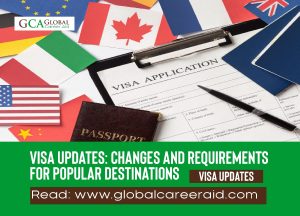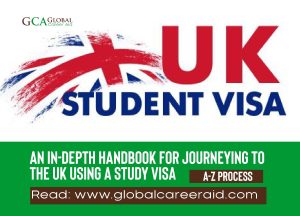
Starting an academic pursuit in the USA is an enriching experience, and acquiring a study visa is a critical step in this process. In this guide, we will thoroughly detail the steps and requirements for a seamless transition into the American education system.
Understanding the Basics
Before delving into the specifics, it’s essential to grasp the fundamentals of study visas in the USA. The F-1 visa is the primary category for international students pursuing academic programs at accredited U.S. institutions.
This visa allows for the full duration of the program and provides flexibility for practical training options post-graduation.
Eligibility Criteria
To be eligible for an F-1 visa, prospective students must meet certain criteria:
1. Admission to a U.S. Institution
Secure admission to a Student and Exchange Visitor Information System (SEVIS)-approved U.S. institution. The institution will issue Form I-20, the Certificate of Eligibility for Nonimmigrant Student Status, upon acceptance.
2. Financial Proof
Demonstrate the ability to cover tuition, living expenses, and other costs. This may involve providing bank statements, scholarship letters, or a financial guarantee from a sponsor.
3. Nonimmigrant Intent
Prove nonimmigrant intent by showing strong ties to your home country, such as family, property, or job commitments. This helps assure U.S. authorities that you plan to return after completing your studies.
The Application Process
1. Receive Form I-20
After admission, the U.S. institution will send you Form I-20. Review it carefully, ensuring all details are accurate.
2. Pay the SEVIS Fee
Before scheduling a visa interview, pay the Student and Exchange Visitor Information System (SEVIS) fee online. This fee supports the maintenance of SEVIS, a system that tracks and monitors students and exchange visitors in the U.S.
3. Complete the DS-160 Form
Initiate the U.S. visa application by completing Form DS-160 online. This form collects personal information and details about your intended stay in the U.S.
4. Schedule a Visa Interview
Visit the U.S. embassy or consulate website in your home country to schedule a visa interview. Plan ahead, as appointment availability may vary.
5. Attend the Visa Interview
Prepare for the visa interview by organizing all required documents, including Form I-20, DS-160 confirmation, passport, visa appointment confirmation, and proof of financial means. Be ready to discuss your study plans and intentions.
6. Pay Visa Application Fee
Pay the non-refundable visa application fee before the interview. The fee amount depends on the visa type and country.
Financial Preparation
1. Tuition and Living Expenses
Have a clear plan to cover tuition and living expenses during your stay in the U.S. Prepare documentation such as bank statements, scholarship letters, or a sponsor’s financial guarantee.
2. Health Insurance
Health insurance is crucial in the U.S. Ensure you have a comprehensive health insurance plan that meets university requirements.
Post-Arrival Responsibilities
1. Report to the Designated School Official (DSO)
Upon arrival, report to the DSO at your institution. The DSO will update your SEVIS record and provide guidance on maintaining your status.
2. Understand Work Opportunities
Familiarize yourself with on-campus work regulations. F-1 visa holders can work on campus but have limitations, and off-campus work requires authorization.
3. Keep Valid Documents
Maintain the validity of your passport, visa, and Form I-20. Extensions or changes must be initiated before expiration.
Conclusion
Embarking on an academic adventure in the USA with a study visa necessitates careful planning and compliance with various prerequisites. Understanding the eligibility criteria, following a structured application process, and addressing financial and logistical components empower students to confidently begin their educational pursuit in the USA. Stay abreast of the most recent information on the official U.S. government website, and consider professional guidance if required. This comprehensive guide aims to simplify the intricate process, laying the foundation for a successful and enriching academic sojourn in the United States.



